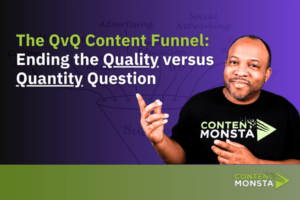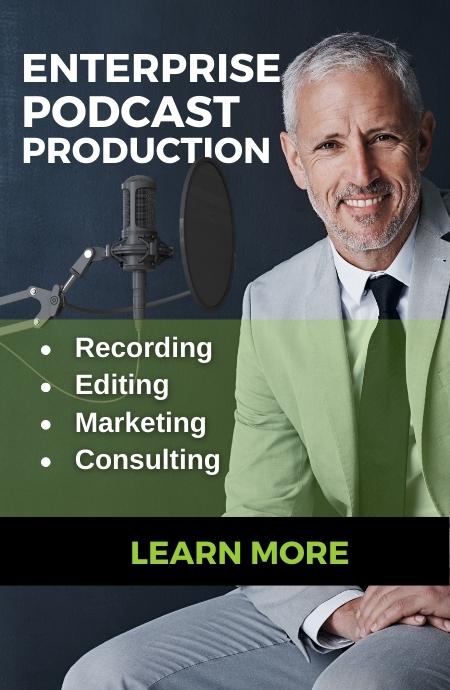Welcome to our Content Marketing FAQ section, where we answer the most commonly asked questions about content marketing. This space is designed to provide you with clear, concise insights into the diverse world of content marketing, from basic definitions to in-depth comparisons with other marketing strategies. Our aim is to not only answer your immediate questions but also to ignite your curiosity about how content marketing can transform your business strategy. Remember, this page is a living resource that evolves with the dynamic landscape of digital marketing, and we welcome your contributions. If you have a question that’s not covered here, or if you’re seeking a deeper understanding of a topic, don’t hesitate to reach out to us at Content Monsta. Your inquiries and suggestions are invaluable in helping us keep this resource relevant and up-to-date. Let’s explore the world of content marketing together!
What is Content Marketing?
Content marketing is a strategic approach focused on creating and distributing valuable, relevant, and consistent content to attract and retain a clearly defined audience — and, ultimately, to drive profitable customer action. It’s not just about selling products or services but about providing information that educates and engages potential customers, establishing a brand as a trusted source in its field.
What is Content Marketing World?
Content Marketing World is an annual conference where content marketing professionals from around the globe gather to learn from industry leaders, share ideas, and network. Well-known marketing experts such as Ann Handley, A. Lee Judge, Andrew Davis, Robert Rose, Pam Didner, Dale Bertrand, Stephanie Stahl, Joe Pulizzi, and Andy Crestodina can be heard there regularly. It’s a hub for learning about the latest trends, strategies, and technologies in content marketing. This event offers a mix of sessions, workshops, and keynotes addressing various aspects of content marketing.
What are Some Content Marketing Examples?
Content marketing can take many forms, including blogs, videos, podcasts, infographics, case studies, and eBooks. For example, a company blog providing useful industry insights, a video tutorial series showcasing product usage, or an infographic breaking down complex industry data. These contents aim to inform, educate, or entertain the audience, thereby building a relationship with them.
What Does a Content Marketing Manager Do?
A content marketing manager oversees the creation and implementation of a content marketing strategy. Their duties include planning content calendars, managing content creation and distribution, measuring and analyzing content performance, and aligning content with business goals. They work closely with writers, designers, and other team members to produce high-quality content that resonates with the target audience.

How Does Content Marketing Work?
Content marketing works by creating and sharing content that is valuable to your target audience. This content helps to build brand awareness, establish trust, and position your brand as an authority in your industry. Over time, this leads to increased customer engagement, loyalty, and conversions. The key is to consistently deliver content that solves problems, answers questions, or entertains your audience.
Does Content Marketing Include Social Media?
Yes, content marketing often includes social media. Social media platforms are used to distribute content and engage with the audience. By sharing content on social media, brands can extend their reach, interact directly with their audience, and drive traffic to their primary content platforms, like a website or blog.
Does Content Marketing Benefit SEO?
Absolutely. Content marketing significantly benefits SEO (Search Engine Optimization). By creating high-quality, relevant content, you can improve your website’s visibility in search engine results. This includes using keywords strategically, creating backlinks, and ensuring your content answers the questions that your target audience is asking search engines.
How Does Content Marketing Help Business?
Content marketing helps businesses by building brand awareness, establishing credibility, and fostering trust with the audience. It supports lead generation and nurtures customer relationships, leading to increased loyalty and customer retention. By providing valuable content, businesses can engage their audience more effectively, encouraging them to take action, such as making a purchase or signing up for a service.

What is Content Marketing vs Copywriting?
Content marketing and copywriting, while related, serve different purposes. Content marketing is focused on creating valuable, relevant content to attract and engage an audience, with a long-term strategy. Copywriting, on the other hand, is more about creating persuasive, sales-oriented text that encourages immediate action, like buying a product or signing up for a newsletter.
What is Content Marketing vs SEO?
Content marketing and SEO are closely intertwined but distinct. Content marketing is about creating and distributing valuable content to attract and engage an audience. SEO focuses on optimizing content and website structure to improve search engine rankings and visibility. While content marketing is broader in scope, SEO is a crucial component that ensures the content reaches its intended audience through search engines.
What is Content Marketing vs Thought Leadership?
Content marketing encompasses a variety of content types aimed at building a relationship with the audience. Thought leadership is a subset of content marketing, where the focus is on establishing the brand or individual as an expert and leader in their industry. Thought leadership content is typically more in-depth, authoritative, and often presents unique insights or perspectives.
What is Content Marketing vs Social Media?
Content marketing and social media marketing are complementary strategies. Content marketing focuses on creating and distributing content to attract and retain a target audience. Social media marketing is a channel within content marketing, used to promote this content and engage with the audience on social platforms. Both aim to build brand awareness and customer engagement but through different mediums.
What is Content Marketing vs Communications?
Content marketing is a part of the broader communications strategy. While communications include all forms of communication a company uses to convey its messages (like PR, internal communications, and advertising), content marketing specifically focuses on creating and distributing valuable content to attract and engage a target audience.
What is Content Marketing vs Public Relations?
Content marketing and public relations (PR) have different goals but can complement each other. Content marketing is about creating content that appeals to and retains a target audience, focusing on customer engagement and building a brand community.
How Do We Align Our Content Marketing Strategy with Our Overall Business Goals?
Aligning your content marketing strategy with business goals starts with understanding your overarching objectives. Are you aiming to increase brand awareness, generate leads, or boost sales? Once clear on your goals, tailor your content to support these aims. For instance, if lead generation is a goal, focus on creating content that persuades your audience to provide their contact information, like eBooks or webinars. Regularly reviewing and adjusting your strategy based on performance metrics is also crucial for maintaining alignment.

What are the Most Effective Methods for Identifying and Understanding Our Target Audience Segments?
To effectively identify and understand your target audience segments, start by analyzing your current customer base and market research. Look for patterns in demographics, interests, and behavior. Surveys, social media listening, and analytics tools can provide deep insights. Creating buyer personas – detailed descriptions of your ideal customers – can also help in tailoring your content to meet the specific needs and interests of each segment.
Which Types of Content are Most Effective for Engaging Our Specific Audience?
The effectiveness of content types depends on your audience’s preferences and behaviors. Analyze your audience data to understand which formats they engage with most. For example, younger audiences might prefer engaging with short-form videos or infographics, while professionals might look for in-depth articles or whitepapers. It’s also important to consider the context – what works on social media might not perform as well in email newsletters.
How Do We Choose the Right Channels for Distributing Our Content to Maximize Reach and Engagement?
Choosing the right channels for content distribution involves understanding where your audience spends their time and how they consume content. Analyze the performance of different platforms and note where you get the most engagement. Also, consider the nature of your content – for instance, visual content may perform better on platforms like Instagram, while thought leadership articles might gain more traction on LinkedIn.
What are the Best Practices for Integrating SEO into Our Content Marketing?
Integrating SEO into your content marketing involves keyword research to understand what your audience is searching for, then incorporating those keywords naturally into your content. Focus on creating high-quality, informative content that addresses your audience’s questions and needs. Also, ensure your website is technically optimized for search engines, with a mobile-friendly design, fast loading times, and structured data.

What Metrics Should We Prioritize to Measure the Success and ROI of Our Content Marketing Efforts?
Key metrics to measure the success of your content marketing efforts include website traffic, engagement rates (like time spent on page, comments, shares), lead generation (number of new leads attributed to content), and conversion rates. It’s also important to track ROI by comparing the costs of content creation and distribution against the revenue generated from these efforts.
How Can We Personalize Content Effectively to Increase Engagement and Conversion Rates?
Effective personalization involves using data to create content that resonates with individual preferences and behaviors. Use analytics and customer data to segment your audience and tailor your content accordingly. Personalization can range from using the recipient’s name in emails to creating content based on their past interactions with your brand. Remember, the key is relevance – the more relevant the content, the higher the engagement and conversion rates.
What Emerging Trends Should We Be Aware of in Content Marketing?
Emerging trends in content marketing include the increasing use of artificial intelligence for content creation and personalization, the growing importance of video content, especially in short and interactive formats, and the emphasis on authenticity and user-generated content. Voice search optimization and the integration of content marketing with augmented reality (AR) and virtual reality (VR) are also gaining traction.
How Do We Allocate Budget Effectively Between Content Creation, Distribution, and Promotion?
Effective budget allocation involves assessing which aspects of your content marketing are yielding the best results. Spend more on creating high-quality content that resonates with your audience. However, don’t neglect distribution and promotion – even the best content needs to be effectively shared and promoted to reach its intended audience. Analyze performance data to determine the best balance between these elements.
What are the Key Technologies or Tools That Can Enhance Our Content Marketing Efficiency and Effectiveness?
Key technologies and tools for enhancing content marketing efficiency include content management systems (CMS) for organizing and publishing content, customer relationship management (CRM) systems for personalizing content based on customer data, analytics tools for tracking performance, and automation tools for scheduling and distributing content. AI-powered tools are also emerging for content creation and optimization.
How Do We Foster Collaboration Between Marketing, Sales, and Other Departments in Content Creation and Distribution?
Fostering collaboration involves establishing clear communication channels and shared goals across departments. Regular meetings and collaborative tools can help align efforts. Encourage the sharing of insights and data between departments – for example, sales teams can provide valuable feedback on customer queries that can inform content creation.

What Legal Considerations Must We Keep in Mind While Developing and Distributing Content?
Legal considerations include ensuring that all content is compliant with copyright laws, accurately represents products or services, and adheres to industry regulations. Be mindful of privacy laws, especially when collecting and using customer data. Always get the necessary permissions for user-generated content and ensure that your content does not infringe on others’ intellectual property rights.
For a Global Audience, What are the Best Practices for Creating and Localizing Content?
When creating content for a global audience, cultural sensitivity and localization are key. Understand the cultural nuances, languages, and preferences of different regions. Localize your content by adapting language, references, and visuals to suit each market. Employing local experts can be invaluable in ensuring your content resonates with diverse audiences.
How Can We Encourage and Leverage User-Generated Content in Our Marketing Strategy?
Encouraging user-generated content can be done by creating campaigns that invite customers to share their experiences, running contests, or featuring customer stories and reviews on your platforms. Make sure to engage with user-generated content by responding and sharing. This not only provides authentic content but also boosts customer engagement and loyalty.
How Do We Manage the Lifecycle of Content from Creation to Retirement, Ensuring Relevance and Freshness?
Managing the lifecycle of content involves regularly reviewing and updating existing content to ensure it remains accurate and relevant. Have a content calendar for planning new content and a system for monitoring the performance of existing content. Retire outdated content or update it to reflect current trends and information. This ensures your content remains fresh and valuable to your audience.
- The QvQ Content Funnel: Ending the Quality versus Quantity QuestionMarketers often debate whether to prioritize the quality or quantity of content. The QvQ Content Funnel proposes a strategy to balance both, tailoring content type and volume to different sales funnel stages. This method enhances engagement, drives conversions, and builds customer loyalty by delivering the right content at the right time.
- 5 Digital Marketing Content Types That Drive BusinessThere are several digital marketing content types that are sure to …
- Marketing Video Budget – How to secure executive approvalDiscover how to secure executive approval for your video marketing budget. This article teaches you to address the critical concerns of CFOs and CMOs, focusing on efficiency, cost-effectiveness, and ROI. Learn strategies for promoting quick turnarounds, diversifying video content, and implementing remote production. Equip yourself with the tools to present a strategic, results-oriented plan that aligns with your company’s goals and impresses your executives.







